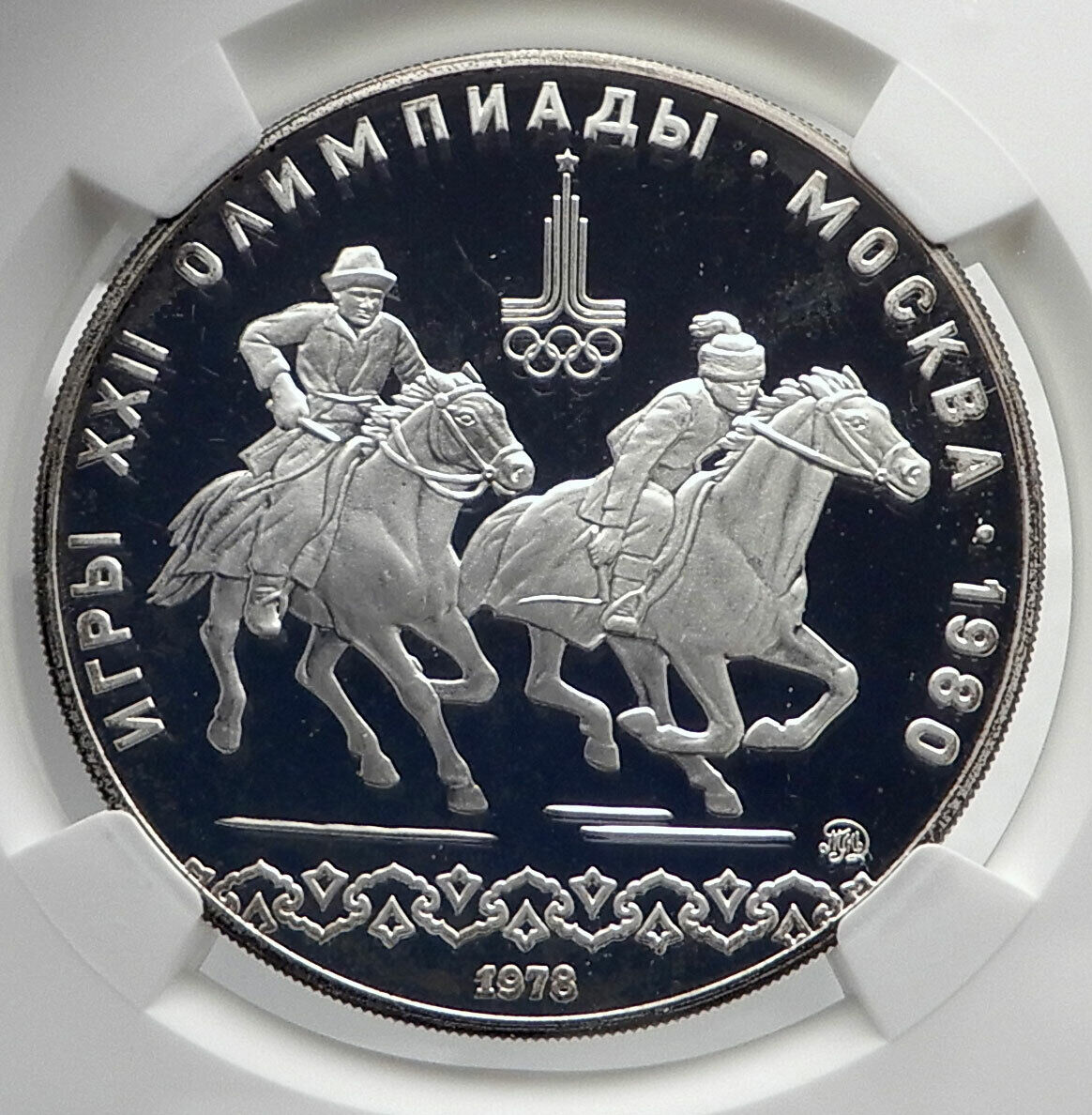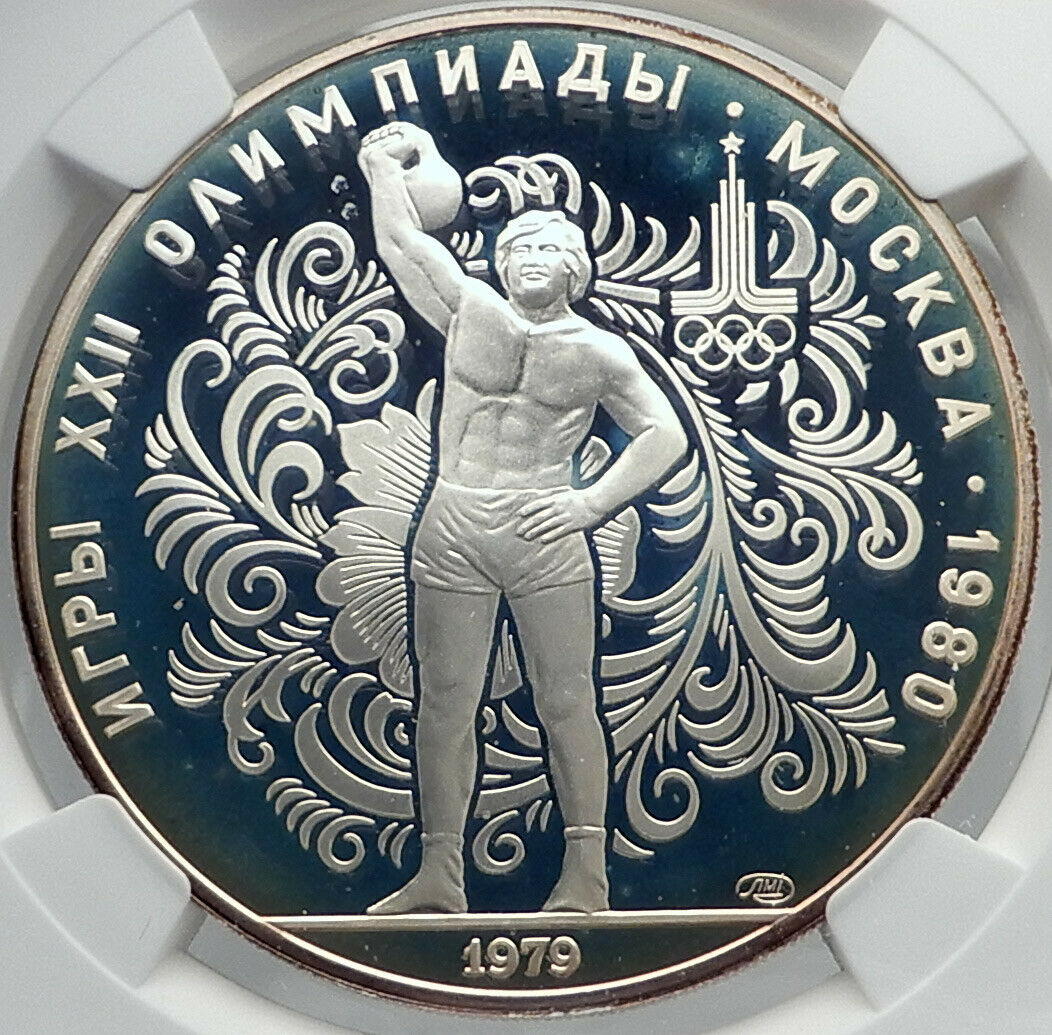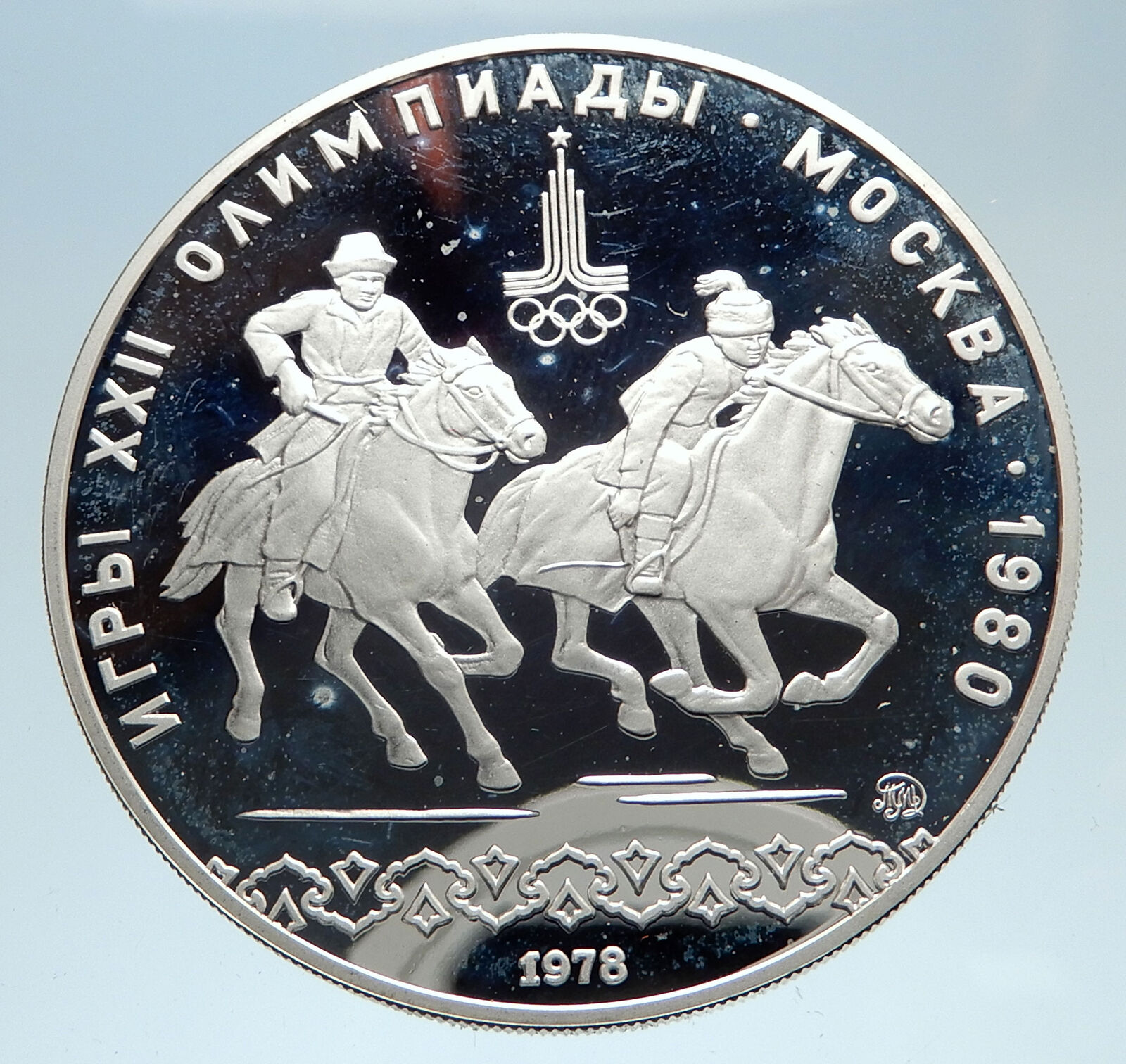|
Russia as USSR Russia – Union of Soviet Socialist Republics
The Historical Series: The Millennium of Russia
1996 Proof Silver 25 Roubles 60mm (173.29 grams) 0.900 Silver (5.0143 oz. ASW)
Reference: Y# 479 | Designer: I. Bilibin
25 РУБЛЕЙ 1996 г. Ag 900 155,5 БАНК РОССИИ, The two-headed eagle designed by artist.
1000-ЛЕТИЕ РОССИИ – ДМИТРИЙ ДОНСКОЙ КУЛИКОВСКАЯ БИТВА 1380 г., The Grand Duke Dmitri Donskoy with a sword, a monk with a cross and the Grand Duke’s sword-bearer holding a horse by the bridle, all standing in a field; in the background – Russian men-at-arms with a gonfalon over them; to the right – the outlines of a monastery, two birds to the left, to the right – a sword and a quiver with arrows.
Coin Notes:
Dmitri Donskoy (1350-1389), the Grand Duke of Moscow (from 1359) and Vladimir (from 1362), led the Russian people’s armed struggle against the Tatar-Mongol invaders. On September 8, 1380 he defeated the army of the Tatar khan Mamai on Kulikovo Plane, a field in the upper reaches of the River Don, after which he received the name Donskoy. In his reign Moscow finally established its leadership among Russian lands. Dmitri Donskoy was buried in the Moscow Kremlin’s Archangel Cathedral.
Date of issue: 19.03.1996 Catalogue number: 5115-0006
You are bidding on the exact item pictured, provided with a Certificate of Authenticity and Lifetime Guarantee of Authenticity.
 Saint Dmitry Ivanovich Donskoy (Russian: Дми́трий Ива́нович Донско́й, also known as Dimitrii or Demetrius), or Dmitry of the Don, sometimes referred to simply as Dmitry (12 October 1350 – 19 May 1389), son of Ivan II the Fair of Moscow (1326-1359), reigned as the Prince of Moscow from 1359 and Grand Prince of Vladimir from 1363 to his death. He was the first prince of Moscow to openly challenge Mongol authority in Russia. His nickname, Donskoy (i.e., “of the Don”), alludes to his great victory against the Tatars in the Battle of Kulikovo (1380), which took place on the Don River. He is venerated as a Saint in the Orthodox Church with his feast day on 19 May (O.S.), or June 1. Saint Dmitry Ivanovich Donskoy (Russian: Дми́трий Ива́нович Донско́й, also known as Dimitrii or Demetrius), or Dmitry of the Don, sometimes referred to simply as Dmitry (12 October 1350 – 19 May 1389), son of Ivan II the Fair of Moscow (1326-1359), reigned as the Prince of Moscow from 1359 and Grand Prince of Vladimir from 1363 to his death. He was the first prince of Moscow to openly challenge Mongol authority in Russia. His nickname, Donskoy (i.e., “of the Don”), alludes to his great victory against the Tatars in the Battle of Kulikovo (1380), which took place on the Don River. He is venerated as a Saint in the Orthodox Church with his feast day on 19 May (O.S.), or June 1.
Dmitry was born in Moscow in 1350, the son of Ivan the Fair, Grand Prince of Moscow, and his second wife, Alexandra Vassilievna Velyaminova, the daughter of the mayor of Moscow. Dmitry was orphaned at the age of nine and ascended the throne of the Principality of Moscow. Per the terms of Ivan’s will, during Dmitry’s minority, Metropolitan Aleksey served as regent.
In 1360 Khizr-khan [ ru ], Khan of the Golden Horde, transferred the title most prized among Russian princes, that of Grand Prince of Vladimir, to Dmitry Konstantinovich of Nizhniy Novgorod. In 1363, after that prince was deposed, Dmitry Ivanovich was crowned at Vladimir. Three years later, he made peace with Dmitry Konstantinovich and married his daughter Eudoxia.
The most important event during Dmitry’s early reign was to start building the Moscow Kremlin; it was completed in 1367. Thanks to the new fortress, the city withstood two sieges by Algirdas of Lithuania during the Lithuanian-Muscovite War (1368-72). The war ended with the Treaty of Lyubutsk. In 1375, Dmitry settled, in his own favor, a conflict with Mikhail II of Tver over Vladimir. Other princes of Northern Russia acknowledged his authority and contributed troops to the impending struggle against the Horde. By the end of his reign, Dmitry had more than doubled the territory of the Principality of Moscow.
Struggle against Mamai
.jpg/220px-Dmitry_Donskoy_in_front_of_Marinkina_tower_(Kolomna_Kremlin).jpg) Mongol domination of Rus began to crumble during Dmitry’s thirty-year reign. The Golden Horde was severely weakened by civil war and dynastic rivalries. Dmitry took advantage of this lapse in Mongol authority to openly challenge the Tatars. While he kept the Khan’s patent to collect taxes for all of Russia, Dmitry is also famous for leading the first Russian military victory over the Mongols. Mamai, a Mongol general and claimant to the throne, tried to punish Dmitry for attempting to increase his power. In 1378 Mamai sent a Mongol army, but it was defeated by Dmitry’s forces in the Battle of Vozha River. Mongol domination of Rus began to crumble during Dmitry’s thirty-year reign. The Golden Horde was severely weakened by civil war and dynastic rivalries. Dmitry took advantage of this lapse in Mongol authority to openly challenge the Tatars. While he kept the Khan’s patent to collect taxes for all of Russia, Dmitry is also famous for leading the first Russian military victory over the Mongols. Mamai, a Mongol general and claimant to the throne, tried to punish Dmitry for attempting to increase his power. In 1378 Mamai sent a Mongol army, but it was defeated by Dmitry’s forces in the Battle of Vozha River.
Two years later Mamai personally led a large force against Moscow. Sergius of Radonezh blessed Dmitry Donskoy when he went to fight the Tatars in the signal Battle of Kulikovo field, but only after he was certain Dmitry had pursued all peaceful means of resolving the conflict. Sergius sent the two warrior monks Alexander Peresvet and his friend Rodion Oslyabya to join the Russian troops. The battle of Kulikovo was opened by single combat between two champions. The Russian champion was Alexander Peresvet. The Horde champion was Temir-murza. The champions killed each other in the first run. Dmitry then met defeated the Horde. In gratitude for the victory, Dmitry established the Dormition monastery on the Dubenka River and built a church in honor of the Nativity of the Holy Theotokos over the graves of the fallen warriors.
The defeated Mamai was presently dethroned by a rival Mongol general, Tokhtamysh. That khan reasserted Mongol rule of Rus and overran Moscow in 1382 for Dmitry’s resistance to Mamai. Dmitry, however, pledged his loyalty to Tokhtamysh and to the Golden Horde and was reinstated as Mongol principal tax collector and Grand Duke of Vladimir. Upon his death in Moscow in 1389, Dmitry was the first Grand Duke to bequeath his titles to his son Vasili I of Russia without consulting the Khan.
_-_Crimea_disputed.svg/220px-Russian_Federation_(orthographic_projection)_-_Crimea_disputed.svg.png) Russia (Russian: Росси́я, tr. Rossiya), also officially known as the Russian Federation (Russian: Российская Федерация, tr. Rossiyskaya Federatsiya), is a country in Eurasia. At 17,125,200 square kilometres (6,612,100 sq mi), Russia is the largest country in the world by surface area, covering more than one-eighth of the Earth’s inhabited land area, and the ninth most populous, with over 144 million people at the end of March 2016. The European western part of the country is much more populated and urbanised than the eastern; about 77% of the population live in European Russia. Russia’s capital Moscow is one of the largest cities in the world; other major urban centers include Saint Petersburg, Novosibirsk, Yekaterinburg, Chelyabinsk, Nizhny Novgorod, Ufa and Kazan. Russia (Russian: Росси́я, tr. Rossiya), also officially known as the Russian Federation (Russian: Российская Федерация, tr. Rossiyskaya Federatsiya), is a country in Eurasia. At 17,125,200 square kilometres (6,612,100 sq mi), Russia is the largest country in the world by surface area, covering more than one-eighth of the Earth’s inhabited land area, and the ninth most populous, with over 144 million people at the end of March 2016. The European western part of the country is much more populated and urbanised than the eastern; about 77% of the population live in European Russia. Russia’s capital Moscow is one of the largest cities in the world; other major urban centers include Saint Petersburg, Novosibirsk, Yekaterinburg, Chelyabinsk, Nizhny Novgorod, Ufa and Kazan.
Extending across the entirety of Northern Asia and much of Eastern Europe, Russia spans eleven time zones and incorporates a wide range of environments and landforms. From northwest to southeast, Russia shares land borders with Norway, Finland, Estonia, Latvia, Lithuania and Poland (both with Kaliningrad Oblast), Belarus, Ukraine, Georgia, Azerbaijan, Kazakhstan, China, Mongolia and North Korea. It shares maritime borders with Japan by the Sea of Okhotsk and the U.S. state of Alaska across the Bering Strait.
The East Slavs emerged as a recognizable group in Europe between the 3rd and 8th centuries AD. Founded and ruled by a Varangian warrior elite and their descendants, the medieval state of Rus arose in the 9th century. In 988 it adopted Orthodox Christianity from the Byzantine Empire, beginning the synthesis of Byzantine and Slavic cultures that defined Russian culture for the next millennium. Rus’ ultimately disintegrated into a number of smaller states; most of the Rus’ lands were overrun by the Mongol invasion and became tributaries of the nomadic Golden Horde in the 13th century. The Grand Duchy of Moscow gradually reunified the surrounding Russian principalities, achieved independence from the Golden Horde, and came to dominate the cultural and political legacy of Kievan Rus’. By the 18th century, the nation had greatly expanded through conquest, annexation, and exploration to become the Russian Empire, which was the third largest empire in history, stretching from Poland on the west to Alaska on the east.
Following the Russian Revolution, the Russian Soviet Federative Socialist Republic became the largest and leading constituent of the Union of Soviet Socialist Republics, the world’s first constitutionally socialist state. The Soviet Union played a decisive role in the Allied victory in World War II, and emerged as a recognized superpower and rival to the United States during the Cold War. The Soviet era saw some of the most significant technological achievements of the 20th century, including the world’s first human-made satellite and the launching of the first humans in space. By the end of 1990, the Soviet Union had the world’s second largest economy, largest standing military in the world and the largest stockpile of weapons of mass destruction. Following the dissolution of the Soviet Union in 1991, twelve independent republics emerged from the USSR: Russia, Ukraine, Belarus, Kazakhstan, Uzbekistan, Armenia, Azerbaijan, Georgia, Kyrgyzstan, Moldova, Tajikistan, Turkmenistan and the Baltic states regained independence: Estonia, Latvia, Lithuania; the Russian SFSR reconstituted itself as the Russian Federation and is recognized as the continuing legal personality and sole successor state of the Soviet Union. It is governed as a federal semi-presidential republic.
The Russian economy ranks as the twelfth largest by nominal GDP and sixth largest by purchasing power parity in 2015. Russia’s extensive mineral and energy resources are the largest such reserves in the world, making it one of the leading producers of oil and natural gas globally. The country is one of the five recognized nuclear weapons states and possesses the largest stockpile of weapons of mass destruction. Russia is a great power as well as a regional power and has been characterised as a potential superpower. It is permanent member of the United Nations Security Council, as well as a member of the G20, the Council of Europe, the Asia-Pacific Economic Cooperation (APEC), the Shanghai Cooperation Organisation (SCO), the Organization for Security and Co-operation in Europe (OSCE), and the World Trade Organization (WTO), as well as being the leading member of the Commonwealth of Independent States (CIS), the Collective Security Treaty Organization (CSTO) and one of the five members of the Eurasian Economic Union (EEU), along with Armenia, Belarus, Kazakhstan and Kyrgyzstan.
|





 Saint Dmitry Ivanovich Donskoy (Russian: Дми́трий Ива́нович Донско́й, also known as Dimitrii or Demetrius), or Dmitry of the Don, sometimes referred to simply as Dmitry (12 October 1350 – 19 May 1389), son of Ivan II the Fair of Moscow (1326-1359), reigned as the Prince of Moscow from 1359 and Grand Prince of Vladimir from 1363 to his death. He was the first prince of Moscow to openly challenge Mongol authority in Russia. His nickname, Donskoy (i.e., “of the Don”), alludes to his great victory against the Tatars in the Battle of Kulikovo (1380), which took place on the Don River. He is venerated as a Saint in the Orthodox Church with his feast day on 19 May (O.S.), or June 1.
Saint Dmitry Ivanovich Donskoy (Russian: Дми́трий Ива́нович Донско́й, also known as Dimitrii or Demetrius), or Dmitry of the Don, sometimes referred to simply as Dmitry (12 October 1350 – 19 May 1389), son of Ivan II the Fair of Moscow (1326-1359), reigned as the Prince of Moscow from 1359 and Grand Prince of Vladimir from 1363 to his death. He was the first prince of Moscow to openly challenge Mongol authority in Russia. His nickname, Donskoy (i.e., “of the Don”), alludes to his great victory against the Tatars in the Battle of Kulikovo (1380), which took place on the Don River. He is venerated as a Saint in the Orthodox Church with his feast day on 19 May (O.S.), or June 1..jpg/220px-Dmitry_Donskoy_in_front_of_Marinkina_tower_(Kolomna_Kremlin).jpg) Mongol domination of Rus began to crumble during Dmitry’s thirty-year reign. The Golden Horde was severely weakened by civil war and dynastic rivalries. Dmitry took advantage of this lapse in Mongol authority to openly challenge the Tatars. While he kept the Khan’s patent to collect taxes for all of Russia, Dmitry is also famous for leading the first Russian military victory over the Mongols. Mamai, a Mongol general and claimant to the throne, tried to punish Dmitry for attempting to increase his power. In 1378 Mamai sent a Mongol army, but it was defeated by Dmitry’s forces in the Battle of Vozha River.
Mongol domination of Rus began to crumble during Dmitry’s thirty-year reign. The Golden Horde was severely weakened by civil war and dynastic rivalries. Dmitry took advantage of this lapse in Mongol authority to openly challenge the Tatars. While he kept the Khan’s patent to collect taxes for all of Russia, Dmitry is also famous for leading the first Russian military victory over the Mongols. Mamai, a Mongol general and claimant to the throne, tried to punish Dmitry for attempting to increase his power. In 1378 Mamai sent a Mongol army, but it was defeated by Dmitry’s forces in the Battle of Vozha River. _-_Crimea_disputed.svg/220px-Russian_Federation_(orthographic_projection)_-_Crimea_disputed.svg.png) Russia (Russian: Росси́я, tr. Rossiya), also officially known as the Russian Federation (Russian: Российская Федерация, tr. Rossiyskaya Federatsiya), is a country in Eurasia. At 17,125,200 square kilometres (6,612,100 sq mi), Russia is the largest country in the world by surface area, covering more than one-eighth of the Earth’s inhabited land area, and the ninth most populous, with over 144 million people at the end of March 2016. The European western part of the country is much more populated and urbanised than the eastern; about 77% of the population live in European Russia. Russia’s capital Moscow is one of the largest cities in the world; other major urban centers include Saint Petersburg, Novosibirsk, Yekaterinburg, Chelyabinsk, Nizhny Novgorod, Ufa and Kazan.
Russia (Russian: Росси́я, tr. Rossiya), also officially known as the Russian Federation (Russian: Российская Федерация, tr. Rossiyskaya Federatsiya), is a country in Eurasia. At 17,125,200 square kilometres (6,612,100 sq mi), Russia is the largest country in the world by surface area, covering more than one-eighth of the Earth’s inhabited land area, and the ninth most populous, with over 144 million people at the end of March 2016. The European western part of the country is much more populated and urbanised than the eastern; about 77% of the population live in European Russia. Russia’s capital Moscow is one of the largest cities in the world; other major urban centers include Saint Petersburg, Novosibirsk, Yekaterinburg, Chelyabinsk, Nizhny Novgorod, Ufa and Kazan.




